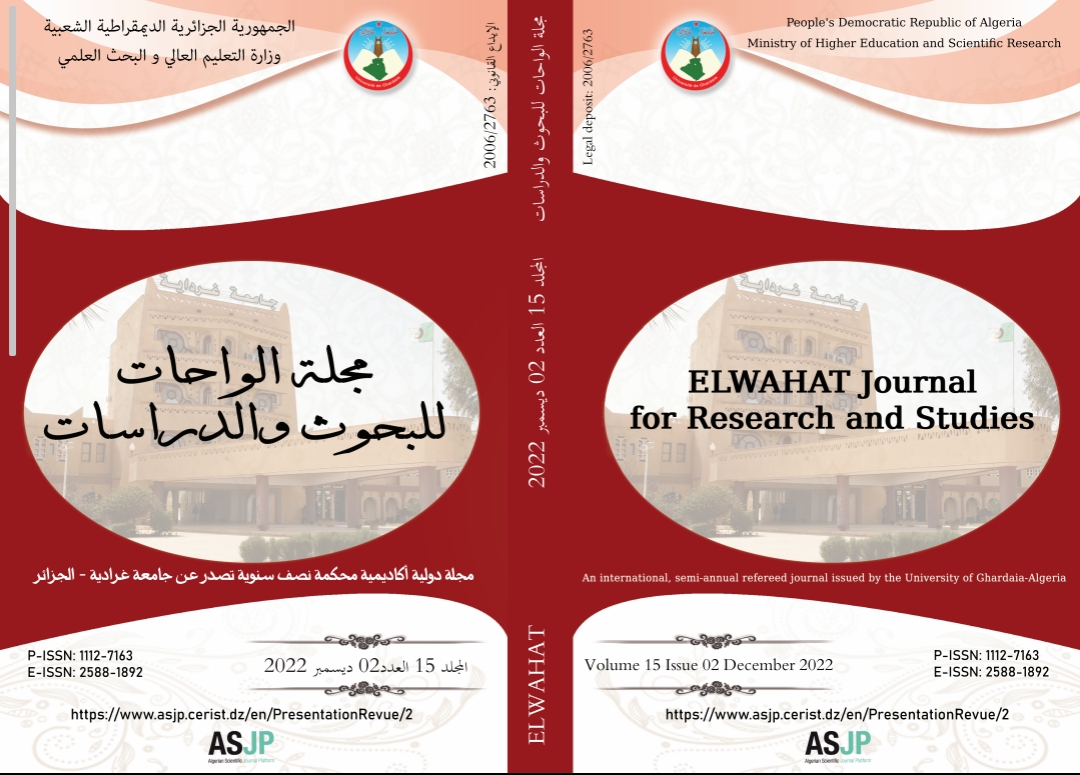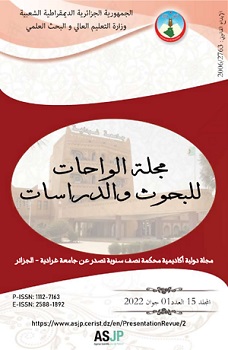A Corpus Based Contrastive Analysis of Attitude Markers in News Articles about COVID-19
الملخص
Abstract:
This Paper Presents A Corpus-Based Contrastive Study Which Examines The Frequency And Use Of Attitude Markers In News Reports About Corona Virus Pandemic By Journalists From Both The British Newspaper (Independent) And The Emirati (Khaleej Times). The Attitude Markers Are Compared In Terms Of The Grammatical Forms In Which They Appear And Their Frequency Using “Antconc” Software Following The Blagojevic(2009) Framework Which Subdivides Attitude Markers Into Six Categories. The Results Show That Journalists From Different Cultural Backgrounds Use Approximately Similar Ways To Express Their Attitudes But With Slight Differences In Percentages Because Of Their Different Cultural Backgrounds. The Frequency Shows That The Ranking Of The Six Categories Is The Same; Adjectives Are The Most Used Category, Adverbs Then Nouns Of Specific Semantic Content And Then The Remaining Three Categories With Very Rare Usage. The Study Suggests Some Implications And Concludes With Recommendations For Future Research In Media Discourse Analysis.
Keywords: Attitude Markers, News Articles, Contrastive Analysis, Newspapers’ Discourse, Discourse Analysis.
المراجع
Abdul-Qadir, I., & Shakir, M. (2015). Attitude Markers In The Writing Of EFL Learners : A Pragma Stylistic Study. مجلة أبحاث البصرة للعلوم الإنسانية, 30. doi: 10.33762/0694-040-003-010
Aijmer, K. (2005). Book Reviews. Intercultural Pragmatics, 2(1). doi: 10.1515/iprg.2005.2.1.105
Amiryousefi, M., & Eslami Rasekh, A. (2010). Metadiscourse: Definitions, Issues and Its Implications for English Teachers. English Language Teaching, 3(4). doi: 10.5539/elt.v3n4p159
Amiryousefi, M., & Barati, H. (2011). Metadiscourse: exploring interaction in writing, Ken Hyland. Continuum, London. Elixir Literature, 40, 5245-5250.
Blagojevic, S. (2009). Expressing attitudes in academic research articles written by English and Serbian authors. FACTA UNIVERSITATIS-Linguistics and Literature, 7(1), 63-73. (UDC 811.111 : 811.163.41 ] : 001.891).
Crismore, A., & Farnsworth, R. (1990). Metadiscourse in popular and professional science discourse. The writing scholar: Studies in academic discourse, 118-136.
Crismore, A., Markkanen, R., & Steffensen, M. S. (1993). Metadiscourse in persuasive writing: A study of texts written by American and Finnish university students. Written communication, 10(1), 39-71.
Crismore, A. (1984). The rhetoric of textbooks: Metadiscourse. J. Curriculum Studies, 16(3), 279-296.
Dafouz-Milne, E. (2008). The pragmatic role of textual and interpersonal metadiscourse markers in the construction and attainment of persuasion: A cross-linguistic study of newspaper discourse. Journal Of Pragmatics, 40(1), 95-113. doi: 10.1016/j.pragma.2007.10.003
De Bruyn, P. (1998). Pragmatiese merkers: die verwaarloosde rededeel. South African Journal Of Linguistics, 16(4), 127-135. doi: 10.1080/10118063.1998.9724149
Fuertes-Olivera, P., Velasco-Sacristán, M., Arribas-Baño, A., & Samaniego-Fernández, E. (2001). Persuasion and advertising English: Metadiscourse in slogans and headlines. Journal Of Pragmatics, 33(8), 1291-1307. doi: 10.1016/s0378-2166(01)80026-6
Fowler, R. (1991). Language in the news: Discourse and ideology in the press. London: Routledge.
Fraser, B. (1990). An approach to discourse markers. Journal Of Pragmatics, 14(3), 383-398. doi: 10.1016/0378-2166(90)90096-v
Fraser, B. (1996). Pragmatic markers. Pragmatics. Quarterly Publication Of The International Pragmatics Association (Ipra), 6(2), 167-190. doi: 10.1075/prag.6.2.03fra
Hyland, K. (1999). Disciplinary discourses: Writer stance in research articles. Writing: Texts, processes and practices, 99121.
Hyland 2000 – Hyland K. Disciplinary Discourses: Social Interactions in Academic Writing. Harlow: Pearson Education, 2000.
Hyland 2005 – Hyland K. Metadiscourse: Exploring Interaction in Writing. London: Continuum, 2005.
Kaplan, R. B. (1966). Cultural thought patterns in inter-cultural education. 1980, 399-418.
Kopple, W. J. V. (1985). Some exploratory discourse on metadiscourse. College composition and communication, 82-93.
Luukka, M. R. (1994). Metadiscourse in academic texts. Text and talk in professional contexts, 77-88.
Matthews, P.H (1997), Concise Dictionary of Linguistics, Oxford; Oxford University press.
Mauranen, A. (1993). Cultural Differences in Academic Rhetoric.: A Textlinguistic Study. Peter Lang.
Meyer, C. F. (2004). English corpus linguistics: An introduction. Cambridge University Press.
Moreno, A. I. (1997). Genre constraints across languages: Causal metatext in Spanish and English RAs. English for specific purposes, 16(3), 161-179.
Mur-Dueñas, P. (2007). A contribution to the intercultural analysis of metadiscourse in business management research articles in English and in Spanish: A corpus-driven approach. Unpublished doctoral dissertation, Universidad de Zaragoza, Zaragoza.
Östman, J. O. (2006). Constructions in cross-language research: Verbs as pragmatic particles in Solv. In Pragmatic markers in contrast (pp. 237-257). Elsevier Scientific Publ. Co.
Schiffrin, D. (1987). Discourse Markers. Cambridge: Cambridge University Press.
Sajdl, D. (2007). Aspects of Newspaper Language-newspaper coverage with focus on the example of the Harold Shipman case. GRIN Verlag.
Thompson, G., & Thetela, P. (1995). The sound of one hand clapping: The management of interaction in written discourse. Text-Interdisciplinary Journal for the Study of Discourse, 15(1), 103-128.
Trillo, J. (2002). The pragmatic fossilization of discourse markers in non-native speakers of English. Journal Of Pragmatics, 34(6), 769-784. doi: 10.1016/s0378-2166(02)00022-x
Valero-Garcés, C. (1996). Contrastive ESP rhetoric: Metatext in Spanish-English economics texts. English for Specific Purposes, 15(4), 279-29
Vande Kopple, W., & Crismore, A. (1990). Readers' reactions to hedges in ascience textbook. Linguistics And Education, 2(4), 303-322. doi: 10.1016/s0898-5898(05)80024






